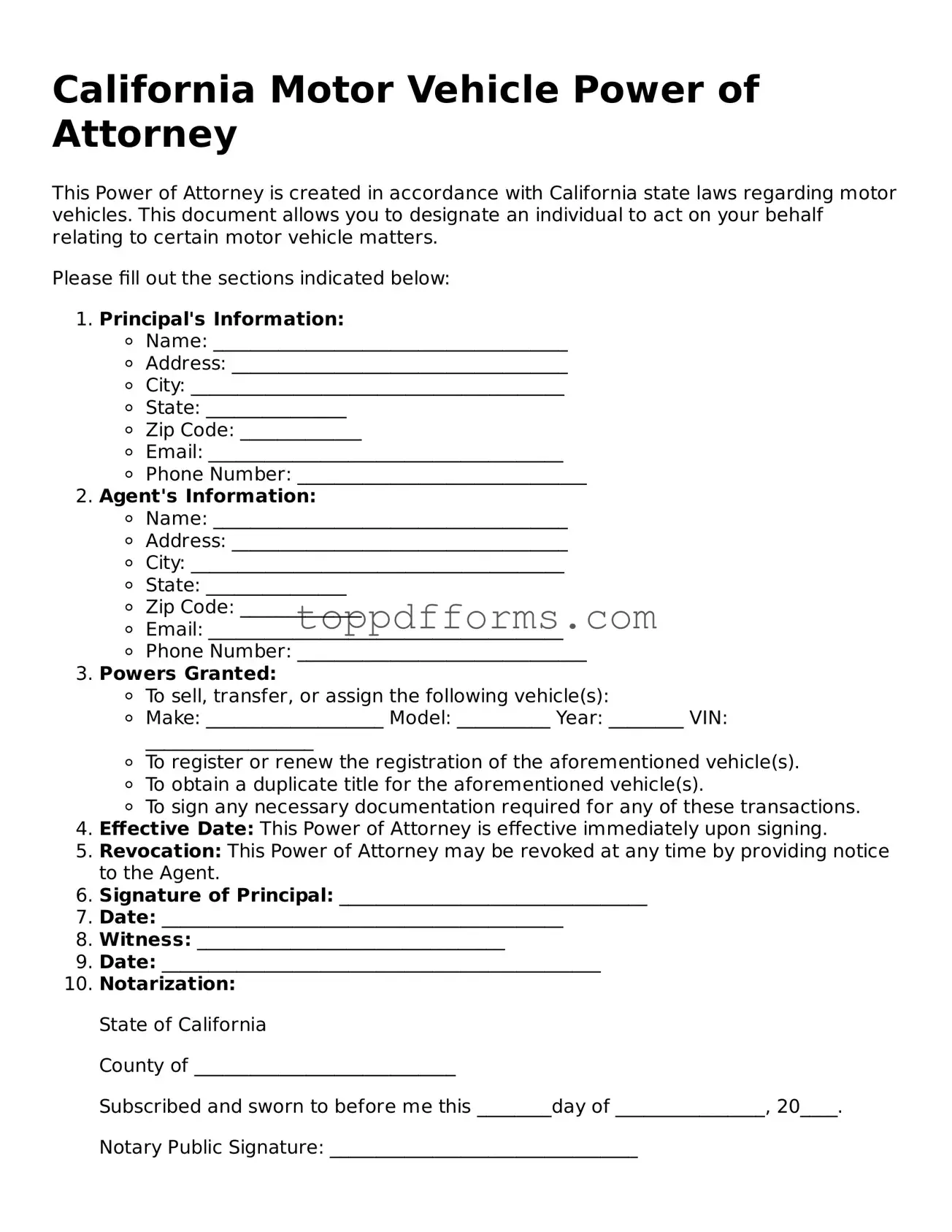What is a California Motor Vehicle Power of Attorney form?
The California Motor Vehicle Power of Attorney form is a legal document that allows an individual, known as the principal, to designate another person, known as the agent, to act on their behalf regarding motor vehicle transactions. This can include tasks such as transferring ownership of a vehicle, registering a vehicle, or obtaining a duplicate title. By completing this form, the principal grants the agent the authority to handle specific matters related to their vehicle, simplifying processes that may otherwise require the principal's direct involvement.
Who should consider using this form?
This form is particularly useful for individuals who may be unable to attend to their vehicle-related matters due to various reasons, such as being out of state, having health issues, or simply being too busy. It is also beneficial for those who wish to empower a trusted friend or family member to manage their vehicle transactions. In situations where a vehicle needs to be sold or transferred quickly, having a Power of Attorney can expedite the process and ensure that everything is handled smoothly.
How do I complete the California Motor Vehicle Power of Attorney form?
To complete the form, the principal must provide their personal information, including their name and address, as well as the details of the vehicle in question, such as the make, model, and Vehicle Identification Number (VIN). The principal then designates the agent by providing their name and contact information. It is essential to sign and date the form to make it legally binding. Depending on the situation, it may also be advisable to have the signature notarized, although this is not always required. After completing the form, the principal should provide a copy to the agent and keep a copy for their records.
Is there a specific duration for which the Power of Attorney is valid?
The California Motor Vehicle Power of Attorney does not have a fixed duration; it remains valid until the principal revokes it or until the specific tasks outlined in the document are completed. If the principal wishes to terminate the authority granted to the agent, they can do so at any time by providing written notice. It is important to communicate any changes to the agent and ensure that all parties involved are aware of the revocation to prevent any confusion in future transactions.
